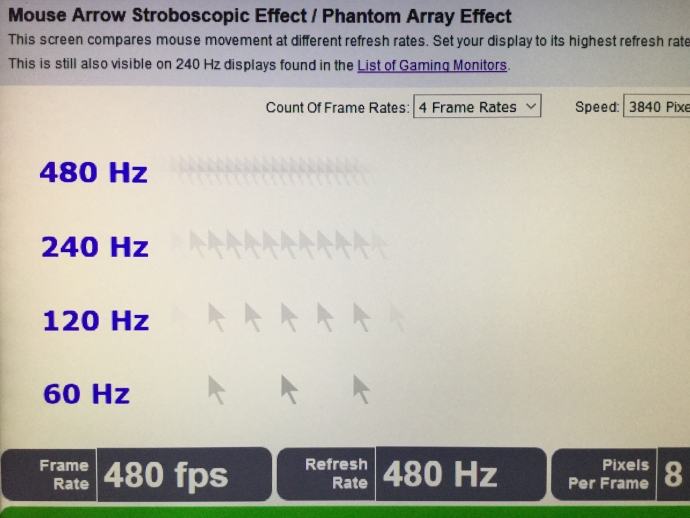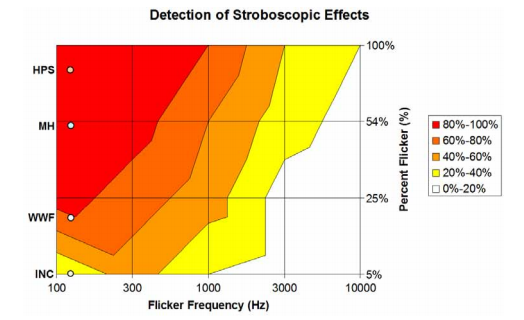Re: Every LED monitor causes eyestrain. Please help.
Posted: 25 May 2019, 12:19
You might be OK with the new CRI 97 LED lights using violet chips as long as they properly lower the violet peak lower than the full spectrum curve (see graphs above). The key is that the violet peak needs to be pushed low like in the graph above, unlike the very sharp blue peaks that current LEDs emit.Jason38 wrote:Even regular LED lights I can't tolerate them. Maybe the special one you mentioned but there hasn't been one yet I can tolerate without orange glasses. It has to be flicker free.
Many cheap LED bulbs don't have enough capacitor filtering to be fully PWM-free especially when dimmed. The majority of my LED bulbs are PWM free but I often paid extra to get CRI 90 which looks wonderful but won't be good enough for you -- it will take CRI 97 or thereabouts for your extreme situation.
Even filament LED bulbs use the crappy chips and look quite bad. But I pay close attention to LED technology developments -- as LED underpins almost every future display technology (even OLED screens)! LED-backlit LCD, OLED, MiroLED -- almost no display technology is untouched by LED!
Most people are perfectly fine with CRI 80 lightbulbs but for picky people they're bottom of barrel. I am a little pickier than average (not as picky as you) -- going towards CRI 90 bulbs. The cheapest CRI 90 bulbs I find today are the ones at IKEA, they make surprisingly good CRI 90 bulbs now that are really pleasing to my eyes, I can't tell the difference between IKEA LED and a standard incandescent. But they probably still have slightly too much bluepeak for you.
Fortunately, the CRI 97+ bulbs should finally be the trigger but those bulbs still cost about 50 dollars each. For your really extreme LED sensitivity I'd hold out for CRI 97 instead of CRI 95 but I think you will be pleasantly surprised with the better-manufactured CRI 97 / CRI 98 LED bulbs of the 2020s (that successfully shaves the shortwavelength peak to lower than the curve) -- you may even find you no longer need your incandescent insurance.
My experience with other people like you are they begin to get pleasantly surprised when they use the OLED-equivalent of LED light bulbs -- the ones that use violet chip and generate RGB completely by phosphor (unlike today's LED which use blue light, and only use phosphor for red/green). I have heared anecdotes that they were the first-ever LED lightbulbs that stopped their eyestrain for them. The problem is that even CRI 94, CRI 95, etc, still have a slight peakish peak in the low wavelengths, so you gotta push the limits, like CRI 97, etc, getting as close to CRI 100 as possible (identical to incandescent) -- bulbs that successfully neuter that pesky short wavelength peak are still relatively rare. Since you seem to be able to afford all the equipment you have -- you could even invest in a spectrophotometer and test the bulbs yourself too! Consider it your gieger counter for unacceptable LED bulbs. Properly manufactured violet chip LEDs (that are also PWM-free) produce amazingly OLED-quality feel in LED lightbulbs that allow you to put your incandescent light bulbs on eBay by the mid-to-end of 2020s. Thanks to CRI 97+ there's really truly no reason to keep those incandescents around, except as insurance. For CRI97+, try to get 5000K instead of 6500K, that will make sure that short wavelength peak is much
You don't get eyestrain with OLED screens, and those new CRI 97+ violet-chip lightbulbs (the PWM-free specimens; CRI unfortunately is not an indicator of PWM-freeness) are actually more comfortable than OLED screens if they're one of those that push the shortwavelength peak lower than the rest of the sunlight curve. OLED is LED too, and the new CRI 97 violet-chip lightbulbs generate light much more similarly to a Samsung mobile OLED screen (but fuller spectrum) in nearly 100% uniformly phosphor-generated light. The prices probably will fall quite a bit throughout the 2020s.
The main disadvantage of violet-chip LED lightbulbs is that they are slightly less efficient than blue-light-based LED lightbulbs. But that would not matter to you; still far more efficient than incandescent. Probably going to be a 10-year wait for dramatic price-drops on violet-chip-driven LED lighting.
Nontheless, this doesn't preclude the fact that the traditional LED blue-light peak has been a big problem for a small percentage of the human population.

